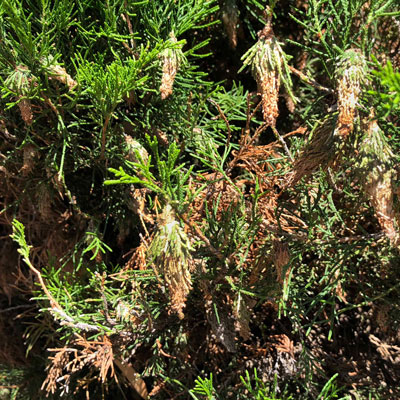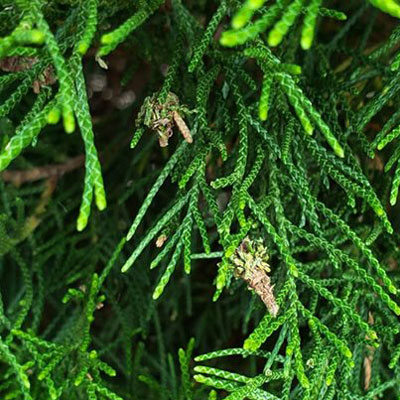Bagworms Are Back
Every year Texas gardeners lose tens of thousands of junipers, arborvitaes, cypresses, cedars and other cone-bearing plants to the voracious feeding of bagworms. That feeding is going on now. Rather than giving you lengthy details, I’d like to summarize the key points for you.

Things to know about bagworms…
• Active feeding season is April-June in South Texas and late May-July in North Texas.

• First evidence will be tiny larvae with very small bags being pulled behind them. Learn to look closely every day at the front end of the time period for your part of the state.
• Soon you will (if you’re observant) notice your plants starting to look sparse. On closer inspection of the plants, you’ll see them, in all or part, teeming with the larvae. The bagworms will still be moving about, carrying their bags behind them.
• Control needs to be attempted before damage gets any worse. Apply organic controls such as Bacillus thuringiensis (B.t.) or Spinosad or inorganic insecticides that are listed for bagworms.
• By the time the worms have finished their feeding (3-4 weeks), they will have stripped all needles off all or parts of the plants. Those parts will probably be killed. Cone-bearing plants lack the ability to send out new sprouts when all leaves are lost.
• Mature bagworms tie their bags around their twigs with durable fibers and seal off their entry holes making it impossible to get insecticides to them.
• Female bagworms never develop wings like the adult male moths. They remain in the bags, emerging only long enough to mate, lay eggs back into the bags, then drop to the ground and die.
• To reduce or eliminate populations the following year you must remove all hanging bags from the plants over the winter. Pick them off by hand and send them off with the trash or burn them. Do not leave them on the ground beneath your plants.
• Finally, there are many species of bagworms. While the most common ones are seen on conifers, there are species that feed on roses, live oaks, elms and other specific plants. They must be dealt with in the same methods.
Note: Here is a fact sheet from Texas A&M giving good detail on bagworms and their control.
Additional Note: Don’t confuse “bagworms” with the tent-forming larvae properly known as tent caterpillars or webworms. Those are completely different and unrelated insect pests. We’ll deal with them at another time here. Actually, many people mistakenly refer to them as “bagworms.”
